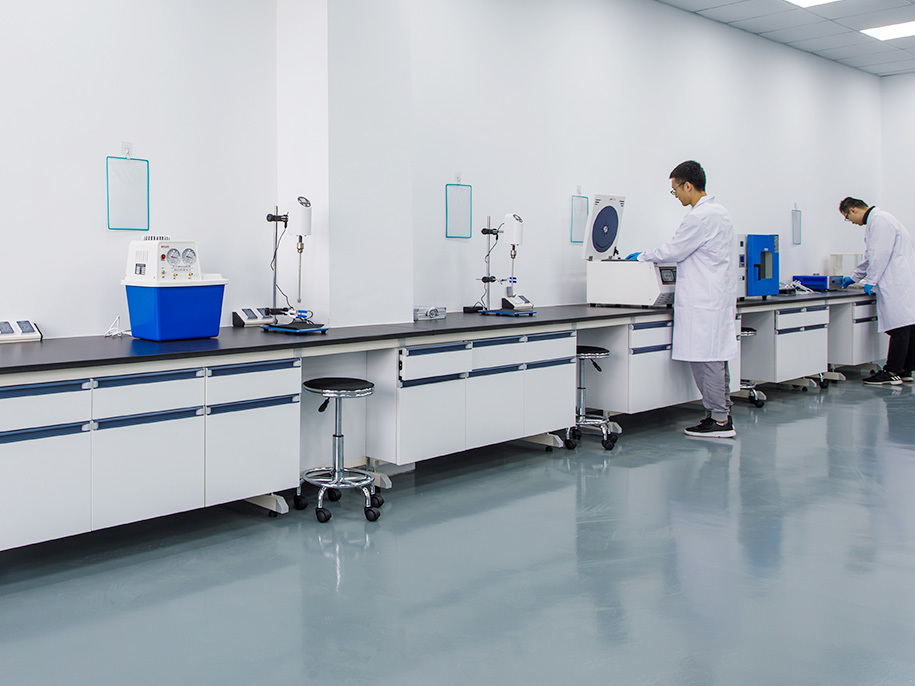Huawei and Apple in a Heated Battle, Carbon Materials Compete in the High-End Market!
On September 10, tech giants Huawei and Apple both held product launch events on the same day. Apple unveiled the iPhone 16 series, while Huawei introduced the world’s first triple-foldable smartphone, the Mate XT.

Processor Information for Huawei Mate XT: The processor details for the extraordinary Mate XT are yet to be fully revealed, but rumors suggest that it may feature the Kirin 9010 chip. While the specific performance indicators are not confirmed, the launch of the Kirin 9010 could significantly boost the Mate XT’s performance.
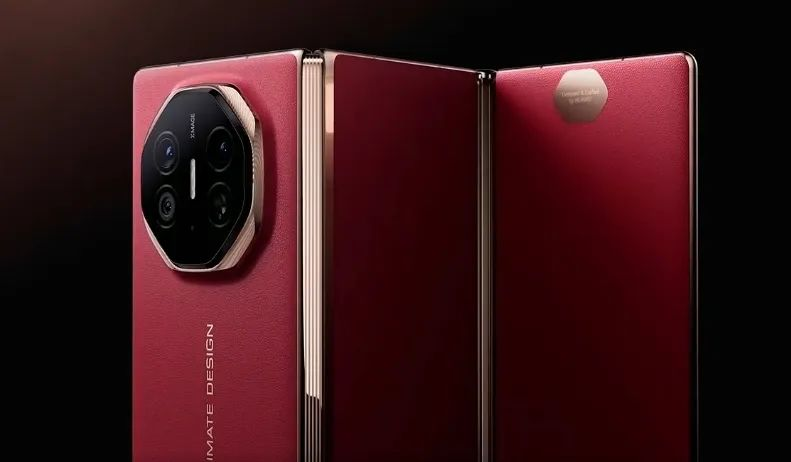
Battery Technology—The Foundation of Smartphones: The iPhone 16 series has made some improvements in battery capacity. According to Apple’s official website, the battery capacity of the iPhone 16 Pro has increased from 3274mAh to 3597mAh, while the Pro Max version has gone from 4422mAh to 4769mAh, representing a 9.8% and 7.8% increase, respectively. The new L-shaped battery design and metallic casing optimize space efficiency and improve heat dissipation.
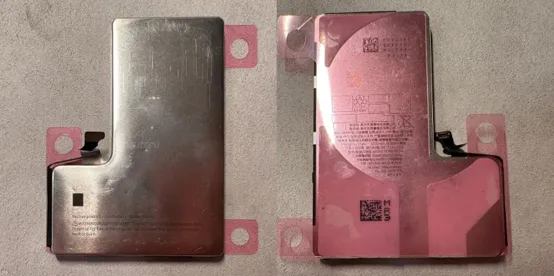
Meanwhile, the Huawei Mate XT features a 5600mAh “world’s thinnest silicon anode large-capacity battery,” with a thickness of only 1.9mm. It supports 66W wired fast charging, 50W wireless fast charging, and advanced features like Lingxi communication and TianTong satellite calling.
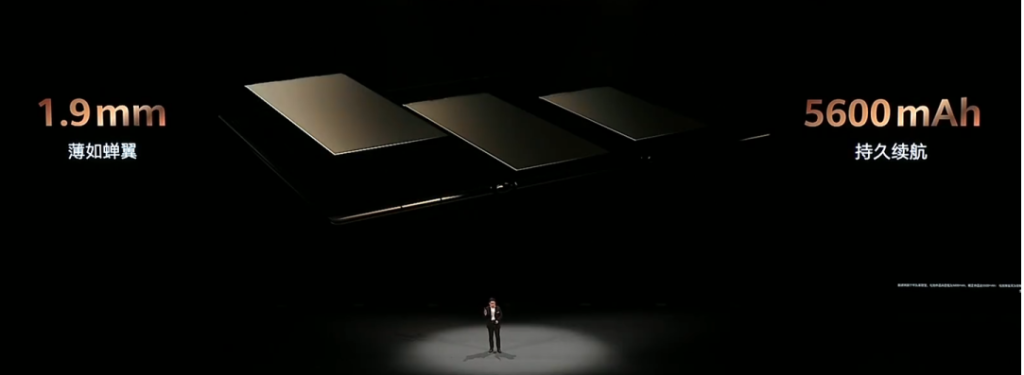
Other Brands: In June, OnePlus collaborated with CATL to introduce the “Glacier Battery,” which claims to have the largest capacity in the industry for a silicon-carbon anode battery, reaching 6100mAh. Compared to the typical 5000mAh graphite battery, the OnePlus Glacier Battery offers 1100mAh more capacity, while its volume is reduced by 3%. The Glacier Battery uses proprietary “high-capacity bionic silicon-carbon material” with second-generation low-expansion silicon, offering the highest silicon content in the industry at 6%.
Thermal Management—A Key Challenge in Smartphones: As smartphone processors become more powerful, thermal management has become a critical issue in smartphone design. The iPhone 16 continues Apple’s tradition of using multi-layer graphite sheets and efficient thermal materials to disperse and reduce heat from the processor and battery. Apple’s graphite sheet technology, commonly used in high-end smartphones, quickly conducts heat from key components to the phone’s exterior, preventing heat concentration. Additionally, Apple’s processors undergo annual thermal management optimizations to ensure performance stability and battery longevity.
Not long ago, well-known analyst Ming-Chi Kuo revealed that the iPhone 17 might feature the latest graphene-based thermal system. Graphene’s thermal conductivity is several times higher than traditional metal materials, which could significantly enhance thermal management efficiency and improve the overall performance of devices.
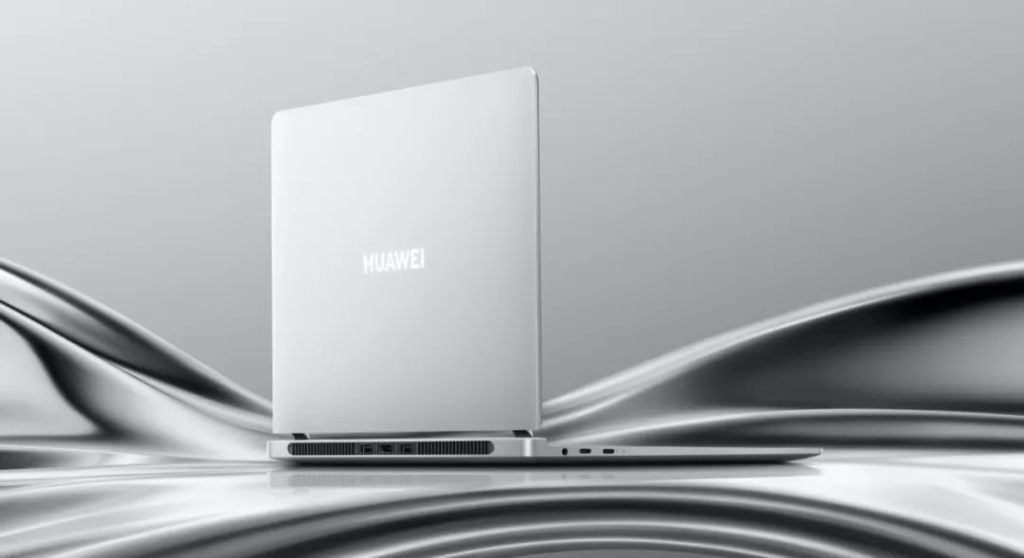
Huawei Mate XT and Thermal Management: As the world’s first triple-foldable smartphone, the Mate XT faces greater thermal challenges. The foldable design requires an efficient thermal management system to prevent overheating, which could cause deformation or damage to the screen. While Huawei has not yet disclosed the thermal management system for the Mate XT, based on its past performance, it is expected to be impressive. In 2022, Huawei introduced the industry-first “ultra-cold flexible graphene thermal system” in its foldable phone, HUAWEI Pocket S. This technology solved the issue of uneven heat dissipation during phone folding and unfolding.
Huawei’s notebook series, such as the MateBook GT 14, also made a breakthrough in thermal management by incorporating the new Huawei Uranus thermal system. This system uses a patented metallic graphene technology, fusing graphene and copper pipes at the molecular level to enhance heat conductivity across components, improving thermal efficiency by 3.3 times compared to traditional copper plate solutions.
Huawei Foldable Phones: Bigger, Lighter, More Durable
Foldable phones, as cutting-edge products in the smartphone industry, have attracted significant attention in recent years. With advancements in technology, foldable phones have gradually transitioned from concept devices to mainstream products. Major brands like Samsung, Huawei, and Xiaomi have all launched their foldable models, and there are rumors that Apple is also developing a foldable phone. Compared to traditional smartphones with fixed screens, foldable phones offer users a more flexible experience. These devices generally feature either an inward or outward folding design. Huawei’s Mate XT, with its innovative triple-fold design, is an industry first. Reports indicate that Huawei has been developing triple-fold technology for years, applying for several related patents as early as 2022. Earlier this year, Huawei applied for a patent named “Foldable Display Device,” which introduces a new form of triple-fold electronic device, featuring three housings, two hinges, and one flexible display. The device uses one inward-folding hinge and one outward-folding hinge to connect the three parts.
Breakthroughs in Foldable Screen Technology: In recent years, foldable screen technology has experienced several critical breakthroughs, especially in flexible OLED display development. Flexible OLED screens can maintain picture quality after multiple folds while supporting high resolution and color accuracy. Thanks to advances in material engineering and manufacturing techniques, the durability and lifespan of these screens have gradually improved.
Foldable phones rely not only on display technology but also on hinge structure, screen materials, and thermal management. High-tech materials such as carbon fiber, ultra-thin glass (UTG), and graphene play crucial roles in foldable phone design. The hinge is a core component, determining whether the screen can smoothly unfold and fold, while maintaining durability after tens of thousands of cycles. To solve this issue, many manufacturers have incorporated carbon fiber composites into the hinge structure. Carbon fiber is known for its high strength and low weight, making it an ideal material for phone hinges. Using carbon fiber reduces wear on the hinge while providing strong structural support, essential for foldable phones that must withstand repeated opening and closing while ensuring stability when unfolded.
In 2022, OPPO’s foldable phone Find N2 introduced innovations in structure and materials by using carbon fiber. This not only reduced weight but also ensured support strength. The phone’s screen structure material was switched from stainless steel to carbon fiber, and the support plates within the hinge were also replaced with carbon fiber, making it the first in the industry to use such a large amount of carbon fiber in a phone.
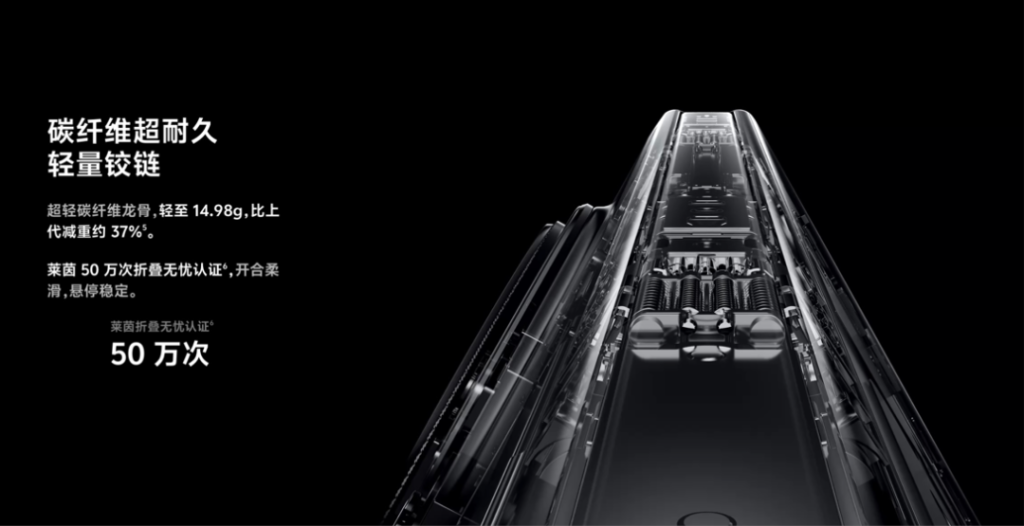
The Role of Carbon Fiber in Durability: The vivo X Fold3 Pro is regarded as a major breakthrough in foldable smartphone technology. This phone uses a hinge component with a carbon fiber skeleton, which enhances durability and sustainability while maintaining a lightweight build. After undergoing rigorous testing by TÜV Rheinland, the phone’s carbon fiber hinge is said to provide up to 12 years of reliable foldability and withstand 500,000 folds.
In summary, as foldable phones evolve, the combination of advanced materials like carbon fiber with innovations in hinge design and display technology has significantly improved the user experience, offering more durable and lighter devices. Huawei’s Mate XT and other leading foldable smartphones are setting new standards in the high-end smartphone market.

